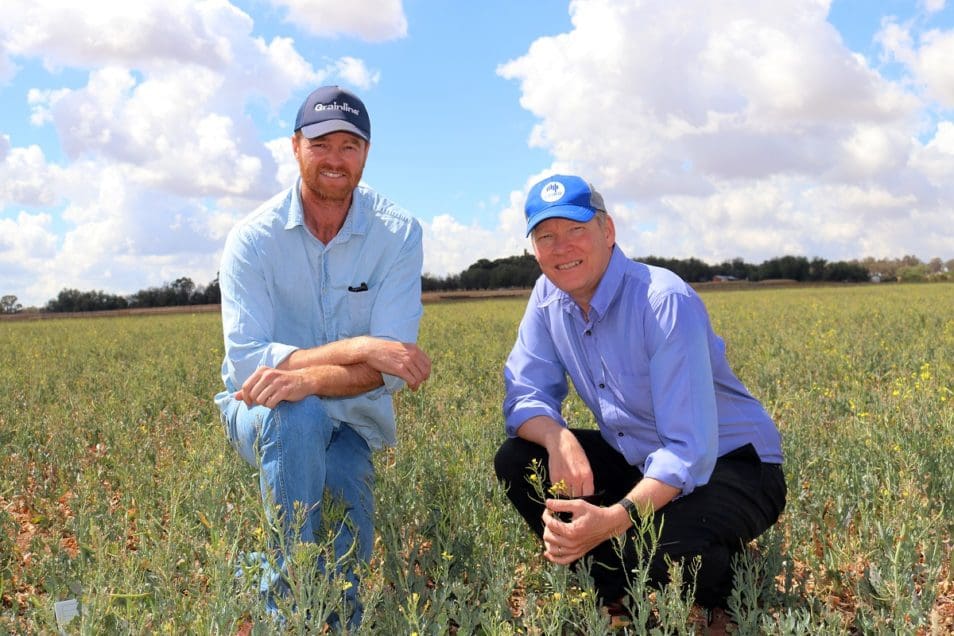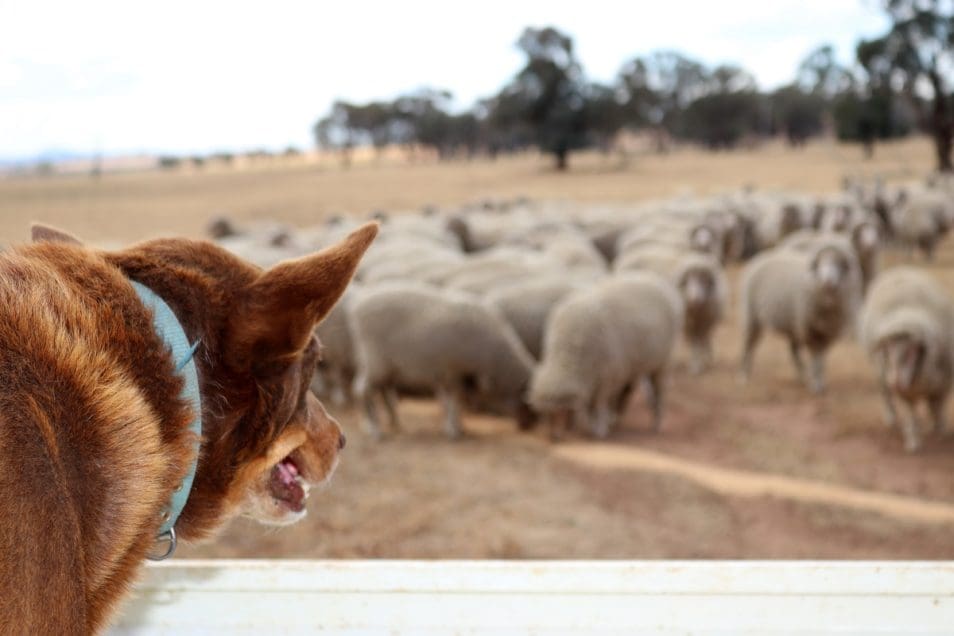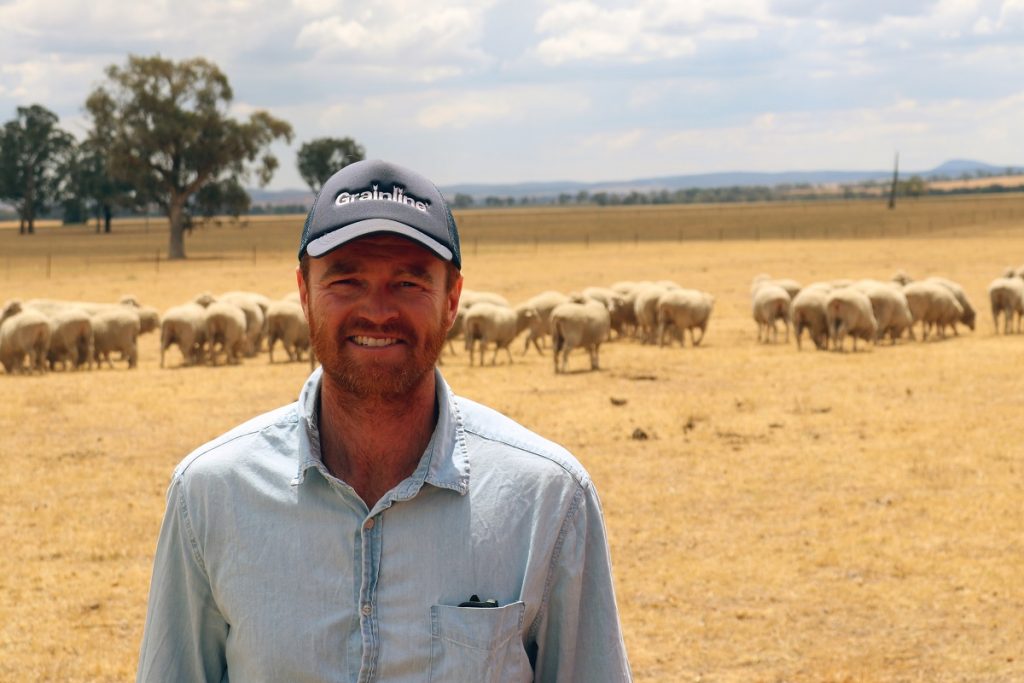
Central West NSW farmer, Nick Kershaw, and CSIRO farming systems agronomist, John Kirkegaard, say dual purpose crops help cut costs during drought.
DURING times of drought, farmers like Nick Kershaw have been able to cut costs with dual-purpose crops.
Mr Kershaw is a crop and merino sheep farmer at Greenethorpe in Central West New South Wales.
He credits the adoption of dual-purpose crops as providing critical stability to his farm in times of drought.
Dual-purpose crops are both grazed by livestock and grown to harvest.
Mr Kershaw has been able to maintain a flock of 2000 merino ewes on his 1200-hectare property.
This has been despite 85 millimetres (mm) of growing season rainfall instead of the usual 300mm average.
His farm adopted dual-purpose canola, a practice that provides extra on-farm grazing opportunities. And a year later the farm was in drought.
“Dual-purpose crops have been a real saviour for our farm,” he said.
Grazed and grown
CSIRO farming systems agronomist John Kirkegaard said the use of crops like oats, wheat and canola provide mixed enterprise farmers with extra flexibility – especially in times of drought.
“Unlike traditional post-harvest grazing of crop stubble and split grain, dual-purpose crop practices also allow farmers to run livestock on their paddock while the crop is younger,” Dr Kirkegaard said.
“You might think you’d suffer from a loss of crop productivity by running sheep over a growing canola field. But we’ve found that when carefully managing the timing of their removal from the crop, there is minimal loss of yield from the eventual harvest.”
Dr Kirkegaard said research had found the practice came with a significant net benefit for farmers. In fact, farmers gain an average of $400/ha for those already running sheep, through savings on additional feed and improved livestock condition.
During times of drought when the cost of feed rises, this means that farmers like Mr Kershaw can minimise their costs and reduce financial stress.

Allowing sheep to graze on crops before they’re harvested means farmers can cut down on feed costs.
Dual-purpose crops: Maintaining farm condition in drought
For Mr Kershaw, adopting dual-purpose crops has had additional benefits during these tough times, when he needs to utilise every on-farm asset he has to keep it ticking over.
While a recent fall of 8mm of rain wasn’t enough to breathe new life into his property, dual-purpose crops have allowed Mr Kershaw to maintain his on-farm natural capital.
“It’s allowed us to rest some of our pastures, rather than grazing them down to bare soil. It allows them to either maintain their condition, or quickly recover in the case of any good rain,” he said.
“We’ve only had to bring in minimal feed from off-farm. And this was more to help supplement various nutrients the sheep need than anything else.”
Dr Kirkegaard said while dual-purpose crops provided added flexibility to mixed enterprise farms, there was no silver bullet to building drought resilience into a farming operation.
“Together with the Grains Research and Development Corporation, we’re dedicated to further improving these methods to build resilience,” Dr Kirkegaard said.
“Our capabilities in agronomy and modelling are also developing new farming practices. This will help Australian farmers maintain profitability and sustainability during times of drought.”

Dual-purpose cropping has been invaluable for Nick Kershaw during the tough times.
When the drought breaks
Mr Kershaw took over running the farm from his father in 2016. The farm has been in drought since 2017 and has seen the period of lowest rainfall on record. So, it’s been a baptism of fire for the 30-year-old farmer. However, he sees positivity in his challenging start.
“We’ve had to think on our feet and be smart with how we go about things. We minimise risk by not taking chances, chase opportunities as they arise and keep informed about the latest developments,” he said.
“If we can get through this like we have to date, we’ll be on the front foot when the drought breaks.”
Source: CSIRO
Grain Central: Get our free daily cropping news straight to your inbox – Click here

HAVE YOUR SAY